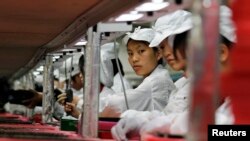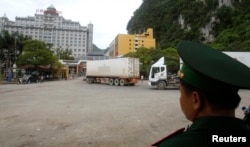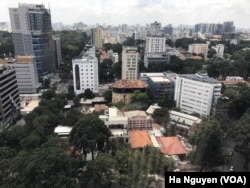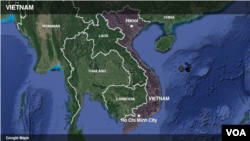The world’s largest contract assembler of consumer electronics, Foxconn Technology, as well as a prominent producer of wireless earphones may be in talks to locate production in Vietnam, instead of the once more obvious choice, China, to escape the Sino-U.S. trade dispute. And business experts in Vietnam say many more export producers are planning the same kind of move.
Vietnam is poised to receive the world’s biggest inflow over the next year of multinationals fleeing the almost year-old trade dispute. People who know the country cite geography, low costs, pro-investment policies and lack of trade friction with the United States as advantages. It’s also on track to sign a free trade pact with the European Union and another with 10 fellow Pacific Rim countries.
A boost in new factories would mean more jobs and higher incomes for Vietnamese, where the middle class is mushrooming.
“I think Vietnam is the clear winner in this category just because of its sheer proximity to China, but I think furthermore Vietnam also has a lot of connectivity with the target markets for these manufacturers,” said Maxfield Brown, senior associate with the business consultancy Dezan Shira & Associates in Ho Chi Minh City.
Top alternative to China
U.S. tariffs levied this year cover $250 billion in made-in-China goods. Multinationals with plants in China but already looking to expand elsewhere may move production to Vietnam sooner than previously imagined because of that added cost, Brown said.
Workers in Vietnam are paid as little as $115 per month, less than in China. After resolving macroeconomic problems in 2012, the Vietnamese government has made foreign investment easier, cutting permit and site selection times down to about one year.
Vietnam’s location makes it easy to ship goods by sea eastward as well as take raw materials by land from mainland China. Multinationals have stepped up inquiries about Vietnam since the United States announced a major round of tariffs in September.
Vietnam is “the only choice” for a manufacturer in China but looking to spread capacity outside, said Fiachra MacCana, research head at the stock brokerage Ho Chi Minh City Securities. Other Asian manufacturing centers are farther from China, cost too much or lack the supply chain for value-added electronics.
“If you have a China-centric supply chain, you can’t move your factory 5,000 miles or 2,000 miles away, because the rest of your factories are still in China, so you have to move your factory to the nearest alternative sovereign state that can accommodate you,” he said.
Planning stages
Foxconn, a prime assembler of iPhones with giant factories in China, is in talks with the Hanoi People’s Committee on setting up an iPhone plant to ease the impact of the Sino-U.S. trade dispute, the Vietnam Investment Review said earlier this month.
Chinese wireless earphone producer GoerTek also plans to move production from China to Vietnam to escape the trade dispute, foreign media outlets have reported.
But registered foreign direct investment in Vietnam came to just $23.18 billion in the first 11 months of the year, down 16 percent from the same period of 2017.
Finding land, ordering factory equipment and getting permits have held exporters back, experts in Ho Chi Minh City believe. Some multinationals may also hesitate to pull out of China if they sell directly to the huge market of Chinese consumers.
“Companies are talking, but no one has pulled the trigger quite yet,” MacCana said.
Companies seeking a haven from U.S. tariffs should start arriving in Vietnam late next year as they get permits and find space, he said.
Inevitable trend
Vietnam’s fast-growing economy has been feeding for the past 30 years, and especially over the past six, off expansion of foreign-invested factories. The capital usually comes from Japan, Singapore, South Korea and Taiwan. Average annual foreign direct investment grew from $2.5 billion in the 2000-2005 span to $8.4 billion between 2008 and 2014, the IMF has calculated.
That trend makes it hard to tell whether the U.S.-China trade war fallout by itself will bring more.
“Vietnam from a macro, from an export perspective is booming anyway, whether it is directly attributable to the trade war, whether that’s just continuing a trend I guess we’ll find out as time goes on,” said Kevin Snowball, chief executive officer with PXP Vietnam Asset Management in Ho Chi Minh City.
Vietnam already faces so much demand that labor and land can be hard to find, said Frederick Burke, partner with law firm Baker McKenzie in Ho Chi Minh City.
“The idea that manufacturing will move to Vietnam is not because of the trade war but because there was a natural migration of manufacturing from China to Vietnam anyway because of the costs going up in China and Vietnam catching up in terms of infrastructure,” Burke said.












